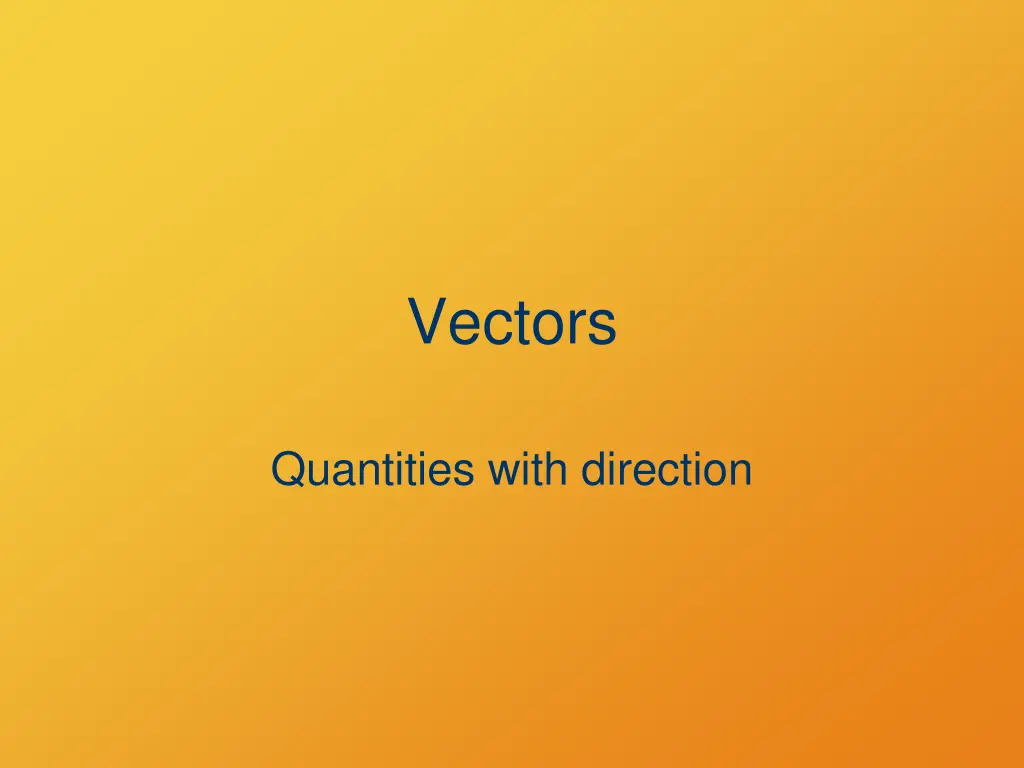
Understanding Vectors and Scalars in Physics
Explore the concept of vectors and scalars in physics, including their definitions, representations, and operations. Learn about unit vectors, basis vectors, Cartesian to polar conversions, and more with detailed explanations and visuals.
Download Presentation

Please find below an Image/Link to download the presentation.
The content on the website is provided AS IS for your information and personal use only. It may not be sold, licensed, or shared on other websites without obtaining consent from the author. If you encounter any issues during the download, it is possible that the publisher has removed the file from their server.
You are allowed to download the files provided on this website for personal or commercial use, subject to the condition that they are used lawfully. All files are the property of their respective owners.
The content on the website is provided AS IS for your information and personal use only. It may not be sold, licensed, or shared on other websites without obtaining consent from the author.
E N D
Presentation Transcript
Vectors Quantities with direction
Vectors and Scalars Vector: quantity needing a direction to fully specify (direction + magnitude) Scalar: directionless quantity
Represent as Arrows direction: obvious magnitude: length location is irrelevant these are identical
Represent as Components Components: extent in x and y (maybe z) directions A = (4, 3) y x B B = (0, 2) A Represent as ordered pairs or triples (one component for each dimension)
Represent as Polar Coordinates r x r = magnitude = trigonometric direction
Unit Vectors Essentially direction-only vectors Magnitude is unitless 1 Special vectors ?, ?, ? along axes are the basis vectors in Euclidean 3-space 3 basis vector ? : +x-direction basis vector ?: +y-direction (1, 0, 0) (0, 1, 0) (0, 0, 1) basis vector ?: +z-direction
Represent as Basis Combinations A = 4 ?+ 3 ? B B = 2 ? A
Cartesian to Polar Magnitude r of a vector: use theorem of Pythagoras r2 = x2 + y2 + z2 r2 = 42 + 32 r 42 + 32 r = = 16 + 9 = 25 = 5
Cartesian to Polar Direction of a vector: use tan ( ) = y/x A = (4, 3) tan = 3/4 = arctan(3/4) A = 36.87
Cartesian to Polar Direction of a vector: If x < 0, add 180 to arctan(y/x) A = ( 4, 3) tan = 3/4 A = 180 + arctan(3/4) = 180 + 36.87 = 216.87
Polar to Cartesian Components x and y of a vector: use sine and cosine x = r cos y = r sin r
Vector Operations addition and subtraction
Add Vectors Graphically Head-to-tail A A C B B A + B = C
Add as Components Add components for each direction separately A = (4, 3) B B = (0, 2) A C = A + B = (4+0, 3 2) = (4, 1) C C = A + B = 4 ? + (3 2) ? = 4 ? + ?
Subtract Vectors Add the negative of the vector being subtracted. D A B A B A B = A + ( B) = D B D + B = A
Scalar Multiplication Product of (scalar)(vector) is a vector The scalar multiplies the magnitude of the vector; direction does not change Direction reverses if scalar is negative A 2 A 2 A 1/2 A
Scalar Multiplication By components: multiply each component by the scalar cA = (cAx, cAy, cAz) ? = ??, ??, ?? A 2 A 2 A 1/2 A
Dot Product of Vectors a a b = ab cos a Commutative b b
Dot Product Geometrically Product of the projection of one vector onto another with the other Overlap a ab cos b
Dot Product by Components A B = (AxBx + AyBy + AzBz)
Cross Product of Vectors Operation symbol Another way to multiply two vectors Product is a vector! Direction of A B is perpendicular to both A and B
Cross Product Magnitude A A B = AB sin A Maximum at = 90 Zero at = 0 , 180 B B
Magnitude Geometrically A A B B A B = area of parallelogram = AB sin
Cross Product Direction Right Hand rule Curl right-hand fingers in direction of Right-hand thumb points in direction of cross- product Not commutative A A B B A B = (B A)
Cross Product by Components Determinant method ? ?? ?? ? ?? ?? ? ?? ?? ? ? = = ? ???? ???? + ? ???? ???? + ? ???? ????
